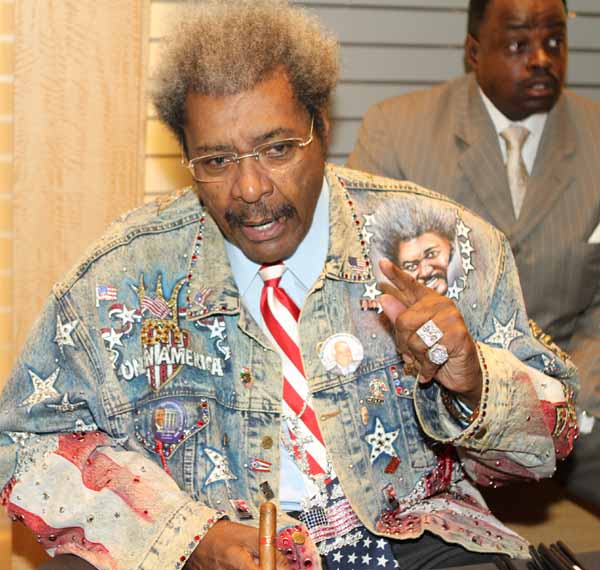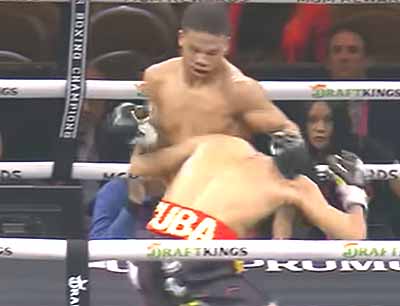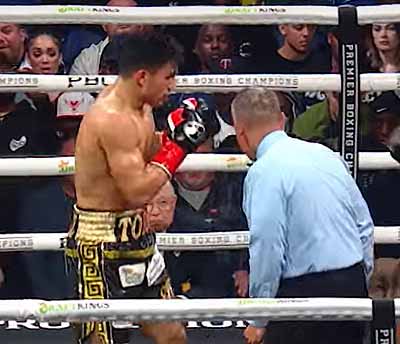Its been written that sports is “drama without a script”. Every so often, however, a sports event plays out exactly according to a script, like the last act of a play. On October 26, 1951, that play was, in the eyes of many, a tragedy.
The day before, October 25th, I had, chronologically, become a teenager. I could now truthfully proclaim that “I was in my teens” and look forward to all the wonders life had to offer a teenager in Brooklyn. It didn’t take long. October 26th was a Friday and Friday was fight night at Madison Square Garden.
I usually had to argue, cajole, persuade, and, usually, as a last resort, grovel, to get my dad to take me with him to McGuire’s, the neighborhood gin mill, to watch the Friday Night Fights on TV. Once in a great while, he’d give in, particularly if one of the fighters was a favorite of mine, Irish Bob Murphy, Chico Vejar, Kid Gavilan. However most of the time I was informed that 11 o’clock, the time the Friday Night Fights ended, was too late for me to be up, even on a Friday. I always secretly suspected that the real reason was that my dad wanted to hang around McGuires for a few more hours and that I was a major impediment to that plan. Needless to say, I kept those suspicions to myself.
However, on this particular Friday morning, I was immediately made aware of the benefits of traversing into my teens. At the breakfast table, casually, my dad, without even looking up from the paper, asked me, “You coming to McGuires tonight, to watch Joe Louis fight?”
Trying to match my dad’s casualness, and managing to avoid choking on my cereal, I answered, “Sure”, but with my mouth not working too well and my eyes bulging in total surprise, I missed casual by several city blocks.
On Friday, October 26, 1951 Joe Louis was stepping into the Madison Square Garden ring with the up and coming heavyweight from Brockton, Massachusetts, Rocky Marciano. Louis had retired as heavyweight champ on March 1, 1949 and had almost immediately begun fighting exhibition bouts around the country. Despite his substantial earnings from his long career in the ring, Louis was in need of money to satisfy the government who was legally pursuing him for payment of back taxes.
The fact that Louis had no savings can be laid to two things: bad management by those who had handled his career and the fact that Joe Louis liked the high life. He reminded one of the guy, who when asked how he managed to spend his considerable fortune, replied “Half of it went to wine, women and song…. the other half I wasted”.
After upwards of 30 exhibition bouts in 1949 and ’50, Louis attempted to regain the heavyweight championship but lost a 15 round decision to Ezzard Charles in September, 1950. He then went back into the professional ring full time, reeling off seven straight wins against the likes of Freddy Beshore, Lee Savold and Cesar Brior, good heavyweight fighters but closer to journeymen than quality fighters. Next up was Marciano, the highly touted, hard punching, KO artist.
Marciano was unbeaten in 36 fights, having won 31 by knockout. However, most of the bouts were in New England against mostly undistinguished opposition. He had, however, recently out pointed Roland LaStarza and knocked out Rex Layne, two estimable fighters. The Louis bout was, by far, the biggest of his career.
The fact that it was in Madison Square Garden on a Friday night, attested to the “big room” quality of the bout. Amazingly, Louis, at 37, clearly on the far downside of his career, was a 6-5 favorite, over the 28 year old fearsome puncher.
This spoke more to the image of Louis, who had been the heavyweight champ for nearly 12 years, and who literally represented the sport of boxing for a vast majority of fans of the era. It was Louis who had enlisted in the service during World War II, it was Louis who chased down Billy Conn, proving “you could run, but you couldn’t hide”, it was Louis who had repelled what many people, mistakenly, took to be a symbol of the Nazi scourge, when he annihilated Max Schmeling in one round in 1938. (In a latter day irony, it was Schmeling who became a rich man due to his, later-in-life, association with the most American of products, Coca-Cola. It was also Schmeling who was very financially generous to an almost destitute Louis, after the two became close friends several years prior to Louis’ death).
Thus it was Marciano/Louis, on October 26, 1951 and I was, walking, unbidden, into McGuires with my dad, just before the 10 PM TV start, to watch the fight on one of the few televisions in the neighborhood. Being a teenager was great! However, let me be clear, I didn’t “belly up to the bar and order a cold one”.
Like most neighborhood Brooklyn saloons of that time, McGuires had a long rectangular bar with the TV in the far corner and booths against the wall opposite the bar. I was ensconced in one of the booths, and the “cold one” in front of me was a Misson Orange soda. However, since the TV was on a high perch in the corner, I had a good view of the screen. Life as a teenager was good.
I don’t remember the fight on a round by round, punch by punch basis. I do remember that Louis looked very bulky. Not surprisingly, at 37, he was carrying more weight than he did in his prime and he didn’t seem to carry it well. Marciano looked significantly smaller but much more muscular. I do remember that right from the opening bell, Marciano started coming forward, throwing punches from all angles and that Louis was in retreat, sticking his left out in an attempt to keep the younger fighter off him.
I remember that Joe Louis was still Joe Louis, and for the first three or four rounds he was able to keep the fight in the middle of the ring, providing him with the room to maneuver and avoid Marciano’s wild charges and haymaker punches. Marciano fought every fight as if it was a street fight and his strategy was to land as many punches as often as possible anywhere on the guy in front of him.
As the fight progressed, Louis, tiring from his early mid-ring movement, began to spend more time on the ropes and increasingly became the stationary target that Marciano was looking for. The end came in the eighth round, Louis, back to the ropes and to the TV camera, caught a fearsome left hook from Marciano followed by an overhand right that sent Louis through the ropes and out onto the apron of the ring.
I remember it was clear, on the TV screen, that sportswriters and maybe even one of the judges, kept Louis from tumbling off the apron and into the crowd. And the thing I remember most clearly, the thing I have never forgotten about that night which is now more that fifty years past, is that as everyone in the bar watched Joe Louis cascade through those ropes and out onto the ring apron, there wasn’t a sound. All night, these fight fans, two and three deep at the bar, these longshoremen, these cabbies, these subway workers, like my dad, had been shouting at the TV and now with the black and white screen showing Joe Louis sprawled awkwardly outside the ring in Madison Square Garden, there was an eerie sound of silence; absolute, complete, silence, the kind of silence you got at St Jerome’s around the corner, on Sunday, during Mass.
To these witnesses, Joe Louis hadn’t just been heavyweight champion he had been “their heavyweight champion” and now, symbolically, he had been cast from the ring by the next in line. Did these blue collar guys, these guys who worked hard all week at hard jobs intuit any deeper meaning into this sporting event, this drama without a script?
I don’t know, but I think, as they watched Joe Louis being helped up by his handlers, several of them might have thought they were witnessing something more than a boxing match. Daniel Patrick Moynihan, commenting on a much bigger tragedy, when he spoke of November 22,1963, may have come close to a thought that was present in McGuires that night; “We were afraid we would never laugh again. Of course we did. Its just that we were never young again”. Bernie McCoy



